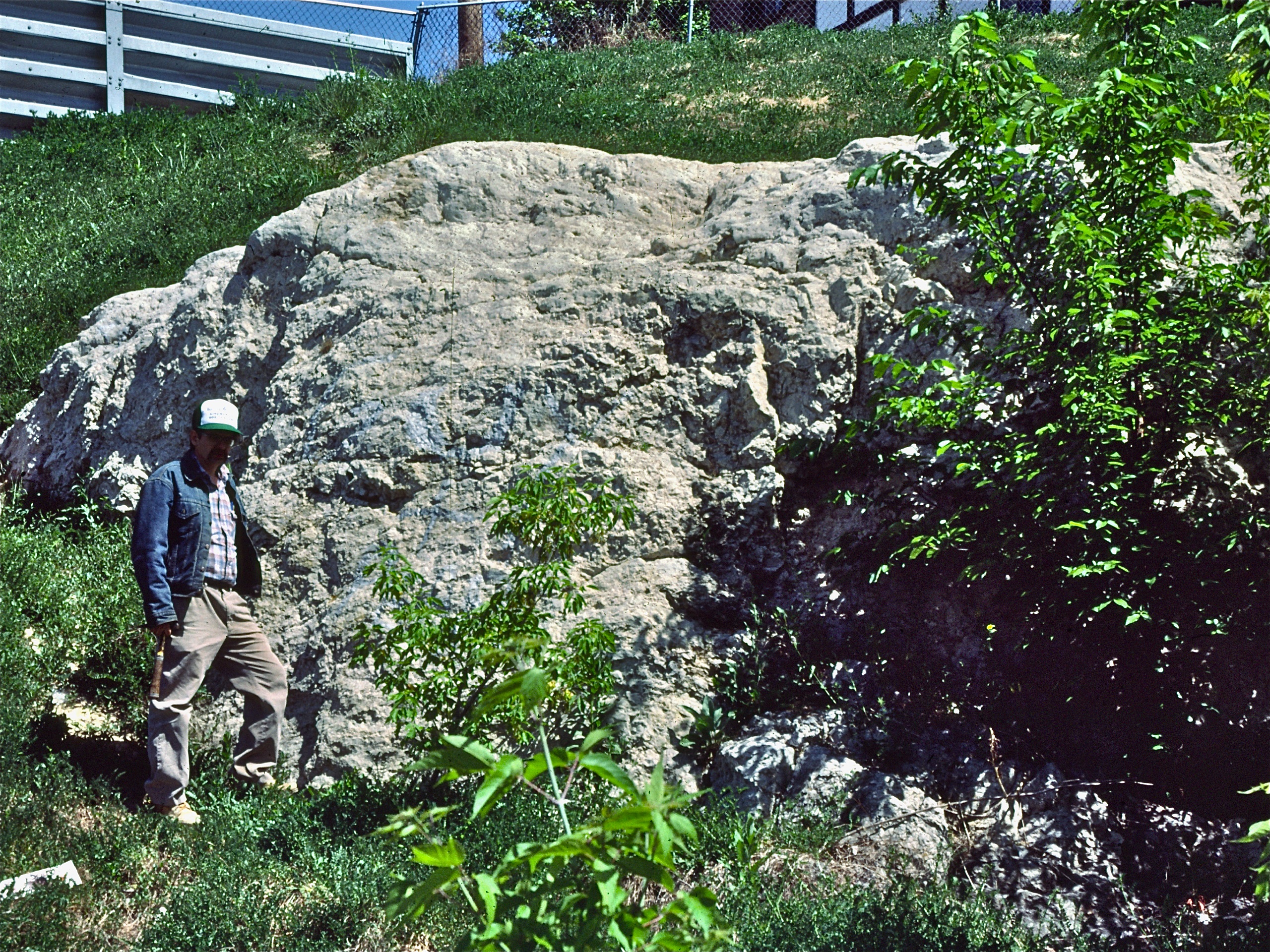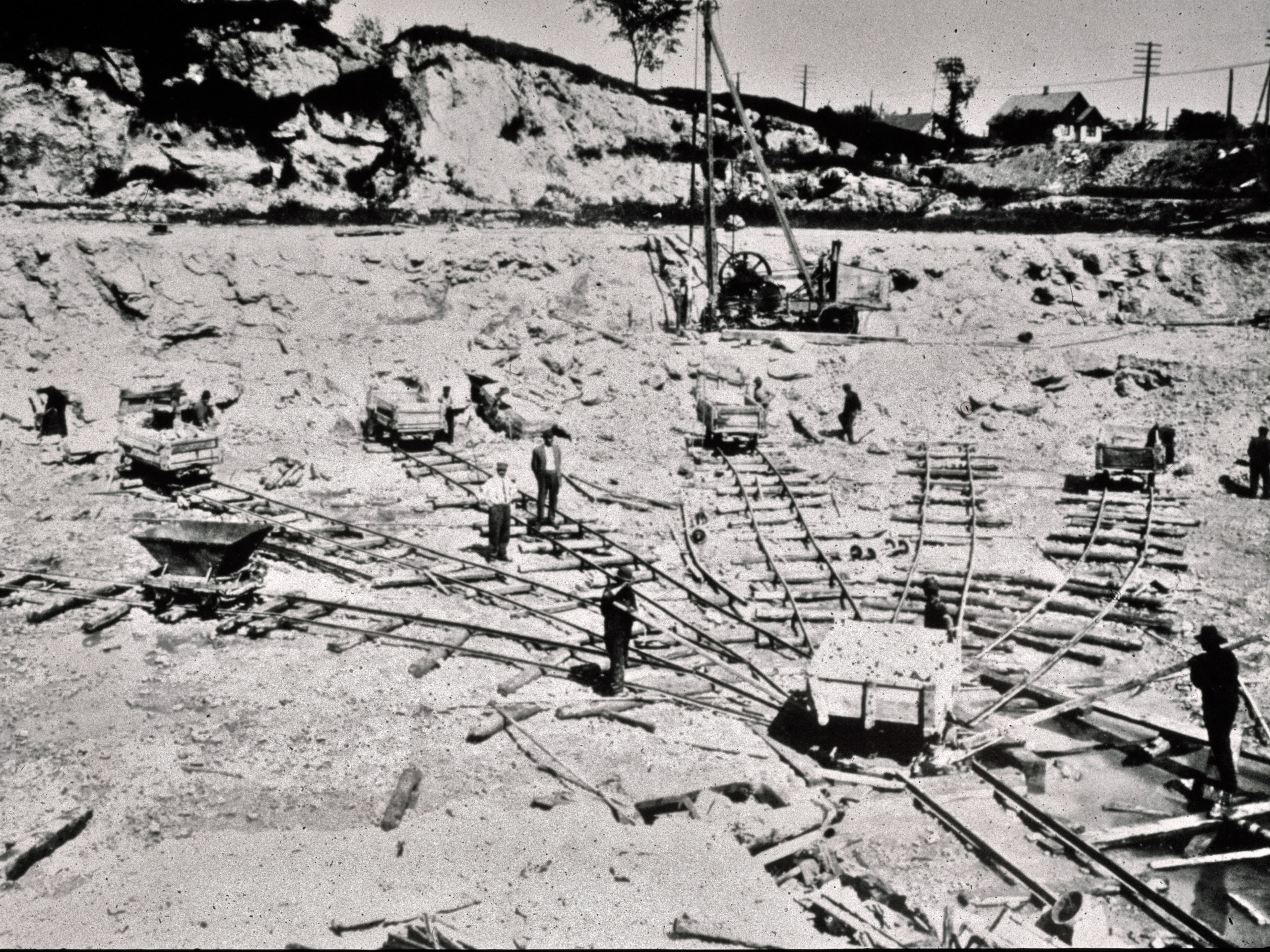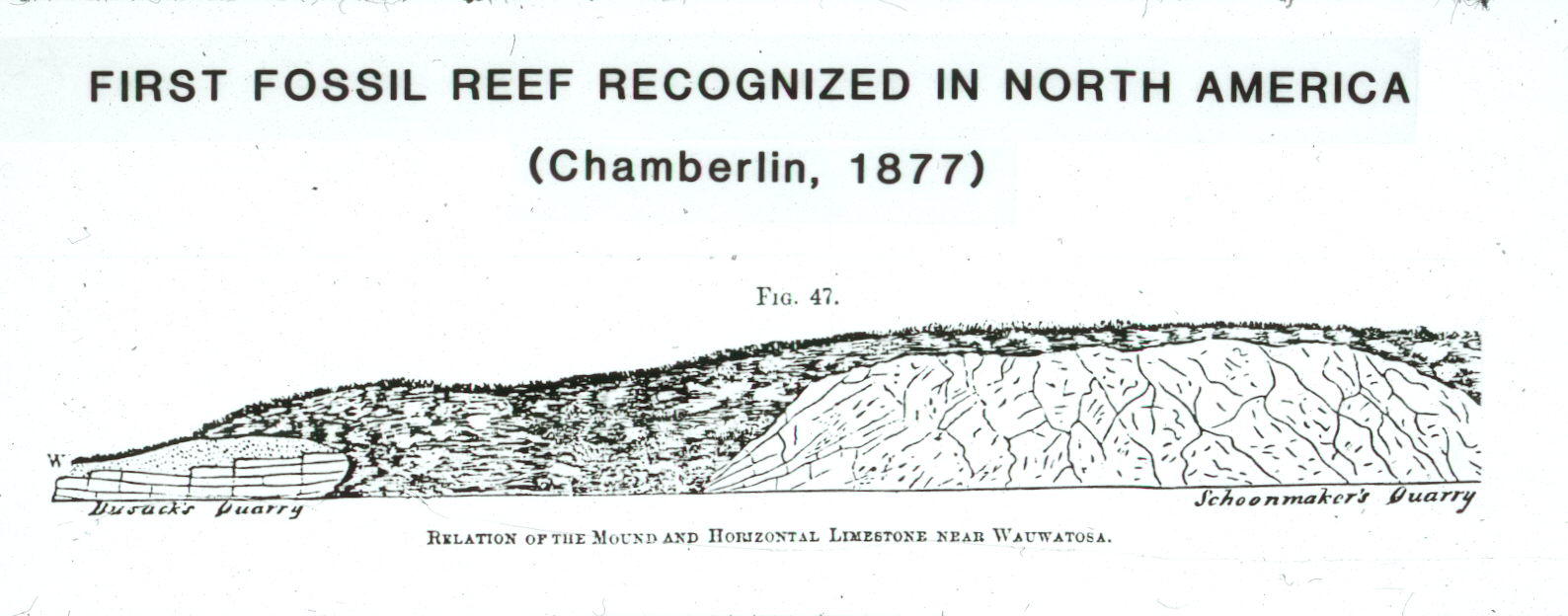Photo Gallery
Stromatoporoids, which appear as ribbon-like areas in the rock, in Racine Formation at Schoonmaker reef, Wauwautosa, Wisconsin. Stromatoporoids are an extinct type of sponge, and the intergrowth of their skeletons trapped and bound carbonate mud, helping to build the reef structure. Polished slab showing stromatoporoids (white to light brown) and carbonate mud (grey-green).
© The Field Museum - CC BY-NC
© The Field Museum - CC BY-NC

Old drill hole used for dynamiting in Racine Formation at Schoonmaker reef, Wauwautosa, Wisconsin.
© The Field Museum - CC BY-NC
© The Field Museum - CC BY-NC
Silurian rock outcrop of Racine Formation at Schoonmaker reef, Wauwautosa, Wisconsin.
© The Field Museum - CC BY-NC
© The Field Museum - CC BY-NC

Dr. Rodney Watkins standing next to Silurian rock outcrop of Racine Formation at Schoonmaker reef, Wauwautosa, Wisconsin.
© The Field Museum - CC BY-NC
© The Field Museum - CC BY-NC

The northeast corner of 68th and State Streets, Wauwatosa, was the site of a large quarry that contained a single Silurian reef 19 m thick and over 140 m in breadth. Once known as Schoonmaker's Quarry (shown here about 1900), this area is now filled and covered by urban development (a Sentry Foodstore parking lot). Some of the rock outcrop in the upper right corner of the photo can be seen today.
© The Field Museum - CC BY-NC
© The Field Museum - CC BY-NC

Drawing of Silurian rock outcrop and Schoonermaker's reef. This cross-section shows the area at 68th and State streets, and was published in 1877 by T.C. Chamberlin. Massive, fractured reef rock (Schoonmaker's Quarry) and flat-bedded, interreef deposits to the west (Busack's Quarry) are visible. Note small area of inclined flank beds at the western edge of the reef.
© The Field Museum - CC BY-NC
© The Field Museum - CC BY-NC
Sites
-
North America, USA, Wisconsin, Milwaukee, Wauwatosa, Schoonmaker's Quarry. [LL]






